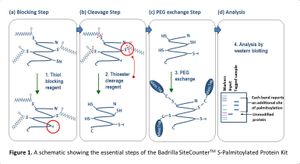Meniscal tears are one of the most common injuries affecting athletes and active individuals. Recently, researchers at Hiroshima University Hospital conducted the first-in-human trial using silk-elastin (SE), an artificial protein known for its wound-healing properties, to promote healing in meniscus injuries. The findings have shown promising results, indicating the potential for improved outcomes following surgical repair.
The study assessed eight patients with meniscal tears located within avascular regions where traditional repair often fails. The application of SE gel alongside standardized surgical repair techniques appeared to be both safe and feasible, with no serious adverse events reported throughout the study.
Meniscal injuries frequently lead to complications such as osteoarthritis, emphasizing the importance of finding effective treatments. With SE gel being engineered to mimic natural proteins involved in tissue healing, researchers believed it could offer significant advantages over conventional methods.
Over the course of their study, which took place between July 2022 and September 2023, the team monitored patients’ recovery through clinical evaluations and imaging tests, including MRI and second-look arthroscopies at three months post-surgery. Notably, outcomes revealed significant improvements as measured by the Lysholm and visual analog scale scores, indicating enhanced function and reduced pain.
"These findings suggest SE is safe and may support meniscal healing in avascular zones, indicating its potential to improve repair outcomes," shared the authors of the study, highlighting the substance's ability to mitigate challenges commonly faced during recovery.
Patients reported mild adverse events, predominantly related to the surgical procedure itself rather than SE application. Most resolved without long-term consequences, emphasizing SE’s favorable safety profile. This aligns with previous animal studies showing the substance's efficacy for wound healing, which these researchers sought to validate within human subjects.
An innovative aspect of this trial was the inclusion of second-look arthroscopies to examine healing directly, allowing for more accurate assessments compared to standard MRI evaluations. "A notable feature of this trial was the evaluation of all patients using second-look arthroscopy at 3 months post-surgery," the authors explained, referring to the method’s importance for determining actual tissue repair.
The results showed promising clinical improvements, with some patients achieving complete healing at the repair site, reinforcing the therapeutic value of SE. For those seeking alternative solutions for persistent meniscal injuries, this research shines light on potential advancements within orthopedic practices.
Despite the small sample size, the trial establishes groundwork for more extensive studies to follow, particularly as researchers look to assess long-term effects and durability of the repairs facilitated by silk-elastin. It stands as evidence of the pharmaceutical and regenerative potential lurking within engineered proteins, showcasing a significant step forward for medical applications.
Further follow-up and wider trials could validate these findings and open pathways to minimize reoperations for meniscal injuries, enabling patients to maintain the functional integrity of their knees with less invasive techniques. The future of meniscal repair may very well hinge on innovations like SE, which embody the merging of biotechnology and orthopedic excellence.



